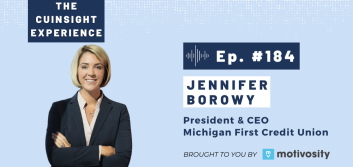Three Credit Union Lessons from European Mutual Banks
 by: Ben Rogers, Research Director, Filene Research Institute
by: Ben Rogers, Research Director, Filene Research Institute
The Dutch do several things very well, among them: water management, speed skating, and cooperative banking. Last year, a Canadian friend introduced me to Hans Groeneveld, a senior executive and chief researcher at Rabobank, a €665 billion Dutch cooperative bank. In addition to being a genuinely pleasant person, Hans has thought as deeply as anyone I know about what cooperative finance means in the modern world.
You see, it’s easy to think that U.S. credit unions are dealing with a unique set of challenges in focusing on member-owners, emphasizing democratic governance, or competing with less-constrained commercial banks. But talking with Hans and sharing articles has proven to me that we can learn from each other about both the challenges and the opportunities.
Stability. One differentiator that crosses the pond: stability. Though mutual banks in Europe –including large ones like Credit Agricole, Rabobank and Banco Populari – control 20% of the financial services market, they were responsible for only 8% of the total direct losses and write downs coming out of the credit crisis of 2008. Filene research shows that U.S. credit unions, as a whole, mirrored that stability in retail and commercial lending.
Member engagement. As for challenges, European cooperative banks struggle just like we do to identify the best measures of member engagement. A 2008 report from the Oliver Wyman consultancy urges cooperative banks to dispense with the hand wringing over low member voting tallies and instead measure engagement by net core membership growth. In a busy world where it’s easier to switch banks than it is to pass a petition or sponsor a motion at the annual meeting, more people joining than leaving means you’re providing real value. “Engagement” is built into the value.
Ownership of Capital. Here’s where the differences emerge. In the Netherlands, excess capital is “capital in dead hands,” meaning that in any demutualization, the excess above regulatory requirements would go into a philanthropic trust. In the U.S., excess capital is available for use at the board’s discretion. We do not need a regulatory change to the European model, but we do need to follow their lead in how we view and plan around the ownership and use of that capital: as an intergenerational endowment.
We will continue to have our challenges, and the Dutch might beat us at Olympic speed skating every four years, but we can learn a lot about the natural limits of cooperative banking by paying attention to our mutual friends across the pond.
For Ben Rogers, ‘correct’ is important but ‘useful’ is paramount. With that lens, Ben manages and edits a large pipeline of economic, market, and policy research related to the consumer finance industry. As the Filene Research Institute’s research director he speaks widely on credit union topics and has authored nearly twenty Filene reports, including much of the Institute’s young adult research.
Ben has served as director of the Institute’s CU Tomorrow project, and previously as editor of The CEO Report and chairman of the National Directors’ Convention. Ben has been cited in the Wall Street Journal, American Banker, the Credit Union Times, and the Credit Union Journal. He holds a master’s degree from Northwestern University and a BA from Brigham Young University. He resides in Madison, Wisconsin, with his wife and four children. www.filene.org





